- Administrator
- Albums and Singles
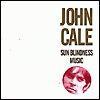 Concurrent to his viola, keyboard and bass guitar duties with theclassic early line-up of the Velvet Underground, John Cale was alsovery busy experimenting by himself and with like-minded associates inNYC lofts. "Sun Blindness Music" is the first of three volumes fromTable of the Elements under the "New York in the 1960s" heading. Thelabel is releasing a wealth of heretofore unheard minimalist music fromthe era, beginning with last year's "Inside the Dream Syndicate VolumeI: Day of Niagra (1965)". But where that disc was much more importantfor its historical context over listening pleasure, this one is betterbalanced between the two. The title track is nearly 43 minutes of VoxContinental organ recorded in October of '67 - passages of discordantor beautiful drone created with stuck keys, flurries of notes andsubtle fluctuations in volume. It's undoubtedly an endurance test bothfor performer and listener, but the piece does manage to be entrancingonce you're acclimated (similar to the effect of a Merzbow track)."Summer Heat", recorded in the summer of '65, is comprised entirely ofa massive wall of nasty guitar sound. Cale strums away on the 6 stringmore as a percussion instrument, the thundering, electric metal tonescreating a rhythmic pattern that relents only once in its 11 minutes.The final track, "The Second Fortress" from late '67 or early '68, isalso done via organ. Here Cale drones, flutters and wavers in quieter,higher pitched tones for over 10 minutes. Interesting, though I stillfind the story and history more interesting than the actual result.It's like William S. Burroughs ... I'd rather read about him thanactually read him. Fortunately this disc features several things TheDream Syndicate disc was sorely lacking: clarity of sound, an elegantdesign and sharp liner notes. Discs 2 and 3, "Dream Interpretation" and"Stainless Gamelan" respectively, will further explore Cale'scollaborations with The Dream Syndicate.
Concurrent to his viola, keyboard and bass guitar duties with theclassic early line-up of the Velvet Underground, John Cale was alsovery busy experimenting by himself and with like-minded associates inNYC lofts. "Sun Blindness Music" is the first of three volumes fromTable of the Elements under the "New York in the 1960s" heading. Thelabel is releasing a wealth of heretofore unheard minimalist music fromthe era, beginning with last year's "Inside the Dream Syndicate VolumeI: Day of Niagra (1965)". But where that disc was much more importantfor its historical context over listening pleasure, this one is betterbalanced between the two. The title track is nearly 43 minutes of VoxContinental organ recorded in October of '67 - passages of discordantor beautiful drone created with stuck keys, flurries of notes andsubtle fluctuations in volume. It's undoubtedly an endurance test bothfor performer and listener, but the piece does manage to be entrancingonce you're acclimated (similar to the effect of a Merzbow track)."Summer Heat", recorded in the summer of '65, is comprised entirely ofa massive wall of nasty guitar sound. Cale strums away on the 6 stringmore as a percussion instrument, the thundering, electric metal tonescreating a rhythmic pattern that relents only once in its 11 minutes.The final track, "The Second Fortress" from late '67 or early '68, isalso done via organ. Here Cale drones, flutters and wavers in quieter,higher pitched tones for over 10 minutes. Interesting, though I stillfind the story and history more interesting than the actual result.It's like William S. Burroughs ... I'd rather read about him thanactually read him. Fortunately this disc features several things TheDream Syndicate disc was sorely lacking: clarity of sound, an elegantdesign and sharp liner notes. Discs 2 and 3, "Dream Interpretation" and"Stainless Gamelan" respectively, will further explore Cale'scollaborations with The Dream Syndicate.
samples:
Read More
- Administrator
- Albums and Singles
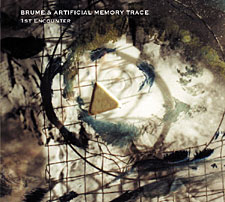 Five years after its completion, Montreal-based Alien8 Recordings havefinally issued this collaborative work between Christian Renou (Brume)and Slavek Kwi (AMT). The music is divided nearly equally with thefirst 36 minutes being Brume's de/reconstruction of recordings suppliedby AMT and the last 40 minutes being AMT's de/reconstruction of Brume.While both entities are well-respected on their own — with numerousreleases on labels which include RRR, Intransitive, Relapse and KornPlastics — on '1st Encounter' the sound has reached a new level,sounding almost more complete than before. Environmental, organicsounds are mangled with an almost surrealistic approach on the firsthalf, as Brume brings pulse, rhythm, movement and cut-up analoguesounds to the table. There's never a dull moment as the motions andsources are constantly in a state of change. On the second half, AMTtakes a much different approach, stretching the sounds into a powerfuland rich score of a futuristic journey on an alien insect-infestedplanet. At the risk of sounding redundant, the result is trulyother-worldly. I can imagine fans of early cut-up improv-based Nursewith Wound immediately attaching onto the first half, while fans ofGraeme Revell's 'Insect Musicians' would find pleasure in AMT's half.Sadly enough, Alien8 has announced that '1st Encounter' is limited andwon't be re-pressed or reissued.
Five years after its completion, Montreal-based Alien8 Recordings havefinally issued this collaborative work between Christian Renou (Brume)and Slavek Kwi (AMT). The music is divided nearly equally with thefirst 36 minutes being Brume's de/reconstruction of recordings suppliedby AMT and the last 40 minutes being AMT's de/reconstruction of Brume.While both entities are well-respected on their own — with numerousreleases on labels which include RRR, Intransitive, Relapse and KornPlastics — on '1st Encounter' the sound has reached a new level,sounding almost more complete than before. Environmental, organicsounds are mangled with an almost surrealistic approach on the firsthalf, as Brume brings pulse, rhythm, movement and cut-up analoguesounds to the table. There's never a dull moment as the motions andsources are constantly in a state of change. On the second half, AMTtakes a much different approach, stretching the sounds into a powerfuland rich score of a futuristic journey on an alien insect-infestedplanet. At the risk of sounding redundant, the result is trulyother-worldly. I can imagine fans of early cut-up improv-based Nursewith Wound immediately attaching onto the first half, while fans ofGraeme Revell's 'Insect Musicians' would find pleasure in AMT's half.Sadly enough, Alien8 has announced that '1st Encounter' is limited andwon't be re-pressed or reissued.
samples:
- Brume - Faction 2
- Brume - Faction 4
- Artificial Memory Trace - Telegram I (part 3)
- Artificial Memory Trace - Telegram II (part 5)
Read More
- Administrator
- Albums and Singles
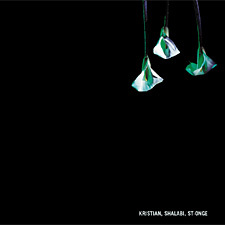 You might imagine that if you combined the twisted electronics of David Kristian, the virtuoso playing of Sam Shalabi and demented avant fuckery of Alexandre St-Onge, the result would be an insane soup of aural mayhem. The first commercially available release of this Montreal-based improv supergroup is actually quite the opposite.
You might imagine that if you combined the twisted electronics of David Kristian, the virtuoso playing of Sam Shalabi and demented avant fuckery of Alexandre St-Onge, the result would be an insane soup of aural mayhem. The first commercially available release of this Montreal-based improv supergroup is actually quite the opposite.
Taking the low-end route, the album's first tracks feaure nearly subsonic rumblings from Kristian while Shalabi and St-Onge — on oud and upright bass, respectively — are almost having a contest to see who can out-quiet each other while still tactfully coloring the music. Continuing on, the electronics seem to shift into a more vibrant mode, taking center attention as opposed to underscore, with a repetitious crescendo, almost like waves crashing while the stringed players do their best to keep up. This stops for a bit while the electronics take the wheel completely, but it soon returns to a clearly observable interactive trio, as the stringed instruments are bowed and plucked while the electronics return to a grumbling sub-bass hum. Fans of improv and Shalabi Effect, Kristian or St-Onge's stuff will most likely have this record already but those new to the scene wouldn't suffer having this in their collection.
samples:
Read More
- Administrator
- Albums and Singles
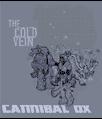 Harlem-based duo Vast Aire Kramer and Vordul Megilah have just joinedthe ranks of Intelligent HipHop with their debut long player. Under thetutelage and gritty production of Company Flow's EL-P, Cannibal Oxrepresent both the avant-garde and the streets of NYC with raw beats,angular rhythms, osmotic synth/sample atmospheres and pure inner cityknowledge. The opening track "Iron Galaxy" (first unleashed last yearon a split EP) drops enough stream of conscious science in its 6minutes to almost make the remaining 68 minutes unnecessary.Observations such as "And if there's crack in the basement? / crackheads stand adjacent", "you were a stillborn baby / your mother didn'twant you, but you were still born" and "I rest my head on 115, butmiracles only happen on 34th" speak truths only some truly know withutter conviction. The lessons continue throughout, plus clever boastsand various other tales: "Ox Out the Cage" - "I grab the mic like AreYou Experienced? / but I don't play the guitar, I play my cadence"; "AB-Boys Alpha" - "my first fight was me against five boroughs / I lostmy first wish / but remembered every detail of my first kiss / that'sthat Bronx Tale bliss"; "Real Earth" - "this ain't a space race so whyyou rushin' / to be the first to catch a concussion from EL-P'spercussion?" Musically and lyrically, "The Cold Vein" is the real deal.I'll be surprised if I hear a stronger hiphop album this year
Harlem-based duo Vast Aire Kramer and Vordul Megilah have just joinedthe ranks of Intelligent HipHop with their debut long player. Under thetutelage and gritty production of Company Flow's EL-P, Cannibal Oxrepresent both the avant-garde and the streets of NYC with raw beats,angular rhythms, osmotic synth/sample atmospheres and pure inner cityknowledge. The opening track "Iron Galaxy" (first unleashed last yearon a split EP) drops enough stream of conscious science in its 6minutes to almost make the remaining 68 minutes unnecessary.Observations such as "And if there's crack in the basement? / crackheads stand adjacent", "you were a stillborn baby / your mother didn'twant you, but you were still born" and "I rest my head on 115, butmiracles only happen on 34th" speak truths only some truly know withutter conviction. The lessons continue throughout, plus clever boastsand various other tales: "Ox Out the Cage" - "I grab the mic like AreYou Experienced? / but I don't play the guitar, I play my cadence"; "AB-Boys Alpha" - "my first fight was me against five boroughs / I lostmy first wish / but remembered every detail of my first kiss / that'sthat Bronx Tale bliss"; "Real Earth" - "this ain't a space race so whyyou rushin' / to be the first to catch a concussion from EL-P'spercussion?" Musically and lyrically, "The Cold Vein" is the real deal.I'll be surprised if I hear a stronger hiphop album this year
samples:
Read More
- Administrator
- Albums and Singles
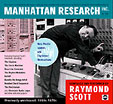 Long before children of the '70s and '80s were blipping and bleeping on laptops in the '90s, people were building large walls of gear just to create the simplest electronic melodies. While many contemporaries were experimenting with music concrète, Raymond Scott was making a commercially viable living composing music for advertisements and short films, along with manufacturing equipment like custom doorbells, telephone rings, burglar alarms and ambulance sirens.
Long before children of the '70s and '80s were blipping and bleeping on laptops in the '90s, people were building large walls of gear just to create the simplest electronic melodies. While many contemporaries were experimenting with music concrète, Raymond Scott was making a commercially viable living composing music for advertisements and short films, along with manufacturing equipment like custom doorbells, telephone rings, burglar alarms and ambulance sirens.
Collected on this 2xCD set issued last year from Holland is over two hours of incredible music — most never before available to the public — including many commercials, short film scores and collaborations with muppetteer Jim Henson. It's simply amazing to think that melodies here from the 1950s and 1960s are almost exactly replicated by folks like Microstoria decades later. Scott wasn't about making random noises, however, he was a true composer, a bandleader, a pianist, electronic engineer, inventor and entrepreneur. The set takes the form of a hard-cover book, including many old photos of various setups, device diagrams, and interviews with folks like Robert Moog and Scott's third wife, Mitzi. Modern electronic music fans need to educate themselves on stuff like this before they jump down somebody's throat who finds their biggest idols derivative.
 
samples:
 
Read More
- Administrator
- Albums and Singles
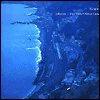 Geir Jenssen's 1997 Biosphere album has been remastered and nicelyre-packaged with a bonus disc for Touch. Disc 1 is "Substrata" properand disc 2 is a new, previously unreleased, commissioned soundtrack forthe 1929 Russian film "Man with a Movie Camera", plus the 2 beatinfused bonus tracks from the Japanese edition of the album. Bothdiscs, nearly an hour apiece, offer a continuous, deep ambient jigsawpuzzle - disc 2 being the noisier with a more urban/industrial aura. Weslowly, willingly drift along through chilled out spaces andcityscapes, natural hums and environmental residues, electronic padsand blips, the clutter of metals and trinkets, disembodied voices andappropriated musical passages, synth strings and plucked/strummedstrings ("Kobresia" in particular settles into a beautiful stringedstasis), softly malleted tones and some subtle rhythmic pulsations.Very soothing, very calming, very Arctic. Jenssen's reclusive Norwegianlocale undoubtedly influences the vast, dark and cold nature of hismusic. But what's surprising to me is how emotionally cold much of italso seems despite it's surface beauty ... a sort of depressing, lonelyvoid. That feeling overwhelms me here at times, but sometimes you wantto feel that way, know what I mean?
Geir Jenssen's 1997 Biosphere album has been remastered and nicelyre-packaged with a bonus disc for Touch. Disc 1 is "Substrata" properand disc 2 is a new, previously unreleased, commissioned soundtrack forthe 1929 Russian film "Man with a Movie Camera", plus the 2 beatinfused bonus tracks from the Japanese edition of the album. Bothdiscs, nearly an hour apiece, offer a continuous, deep ambient jigsawpuzzle - disc 2 being the noisier with a more urban/industrial aura. Weslowly, willingly drift along through chilled out spaces andcityscapes, natural hums and environmental residues, electronic padsand blips, the clutter of metals and trinkets, disembodied voices andappropriated musical passages, synth strings and plucked/strummedstrings ("Kobresia" in particular settles into a beautiful stringedstasis), softly malleted tones and some subtle rhythmic pulsations.Very soothing, very calming, very Arctic. Jenssen's reclusive Norwegianlocale undoubtedly influences the vast, dark and cold nature of hismusic. But what's surprising to me is how emotionally cold much of italso seems despite it's surface beauty ... a sort of depressing, lonelyvoid. That feeling overwhelms me here at times, but sometimes you wantto feel that way, know what I mean?
samples:
Read More
- Administrator
- Albums and Singles
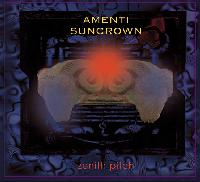
The band's name makes striking reference to the Egyptian underworld, and for those non-Egyptologists who didn't get that this would be a dark and ghost-filled album, its provocative title also paints a pitch-black sun. Fluttering and nervous, brooding and cinematic, Zenith Pitch is a nebulous animal which changes it shape & color from moment to moment, like a panicked octopus. With the exception of a few very catchy tracks, like "Blue Khepra" and "Broken Cone," the album tends to focus on the more difficult margins of the dark ambient genre.My favorite track, "White Nine", is pretty representative, although just a fragment at 1:44: An ominously swelling organic drone flips into electronic sparks, while in the distance the music of a circus is slowly enveloped by darkness and abruptly fades into silence. Out of a constantly shifting sea of bleeps and burps, interrupted themes, muttered samples, voices fractured & barely audible, distorted & restless tones, beautiful drones, and bursts of awkward rhythms, this technically polished album somehow manages to evoke a sense of attentive stillness, of a quiet restraint and sparseness behind all the protean activity.
Zenith Pitch has a few weak spots: despite my sense that there's some order to all this restless movement, it leaves me struggling now and then with a feeling of aimlessness, and its musical antecedents — Coil, Scorn, Lustmord, Zoviet France, Nurse With Wound, even Eno — seem at times to weigh in a bit heavily. The trio has a canny ear for samples & lays them down well, but I also think the work suffers from a lack of vocals: without lyrics, the album as a whole, whatever its virtues, remains something of an indecipherable message. If this showed up in my mailbox, it would be an ornate and meticulously crafted envelope, inlaid with gems and crystals, sent from a country of dreams, but with no letter inside. However, since Khryst takes credit in the liner notes for backmasking, perhaps all the real communication only happens when it's played backwards!
The other night I was playing the beautiful fifth track, a chilly travelogue called "Fractured Diadem", when a friend — a Tibetan Buddhist monk, actually — stopped by. He stopped at the door and listened, and said "Cool, you're watching Forbidden Planet, I love that movie!" With that the whole album fell into place for me. For all its borrowings and references, Amenti Suncrown are so distinctive because they're the Krell Musicians from Forbidden Planet: "Ethically, as well as technologically, a million years ahead of humankind!" Although the latter may certainly be true, it is a quirky alien sound that seems to me to be emerging from the heart of this musical project: difficult to get a handle on emotionally, but hauntingly suggestive of strange landscapes of pure thought, of which this often enigmatic music is the sole remaining artifact.
I like this album, and I like what Amenti Suncrown seem to be striving for. I also like that out of a print run of 1000 individually numbered copies of an obviously expensive CD package, they've already given away — as in for free! — the majority of the pressing to people online who'd expressed interest. If by the time you read this there is a single copy left anywhere, I'd suggest acquainting yourself with this promising trio — sooner or later I expect we'll all be getting to know them much better. If you've missed your chance at Zenith Pitch, you won't have long to wait for a sequel: I'm told that ZP's darker twin Golden Nadir is due from World Serpent in late June on amber vinyl only, in a numbered edition of 333.
 
samples:
 
Read More
- Administrator
- Albums and Singles
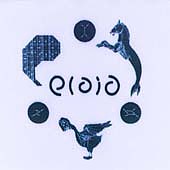 Rather than taking the fresh step forward from the hip hop and cosmically influenced varieties of 1999's 'Rest Proof Clockwork,' Plaid have returned to a style much closer to 1997's '333' release. While they're making no leaps and bounds for electronic music as a whole, they succeed in making pleasant, peaceful and easily digestible melodies, using the equipment and styles of 1993-era Orbital, Autechre and Aphex with hints of The Shamen and 808 State circa 1991.
Rather than taking the fresh step forward from the hip hop and cosmically influenced varieties of 1999's 'Rest Proof Clockwork,' Plaid have returned to a style much closer to 1997's '333' release. While they're making no leaps and bounds for electronic music as a whole, they succeed in making pleasant, peaceful and easily digestible melodies, using the equipment and styles of 1993-era Orbital, Autechre and Aphex with hints of The Shamen and 808 State circa 1991.
Warp
'Double Figure' opens with a pretty guitar melody, and while it's a warm welcome to the glitch and cut and paste plaguing the current world, it's all too easily primed for advertisement consumption. Further tracks utilize mid-80s fairlight synth sounds and rigid 4/4 techno beats with loads of electronic rhythmic accents comfortably laid over long delayed stretches of spacey keyboards. Comfortable is a good word to describe this whole disc, as it's something I wouldn't offend my mom with. Ignoring software chauvenism, breakbeats or spaghetti structures, Plaid have chosen to take an approach more man than machine. The duo aren't technologists, they're songwriters, with songs like "Sincetta" standing far above its dull surroundings as a luscious cinematic theme. Something like this clues me in that Plaid still have the potential to realize something great. Unfortunately, I'm finding the filler is just a little too thick to wade through to make 'Double Figure' truly excellent. Instead of 70-minute 19-track albums, bands seriously need to consider weeding out the noodly crap and concentrate on a good 8-10 songs that'll make a lasting impression.
 
samples:
 
Read More
- Administrator
- Albums and Singles
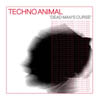 Three of electronic's most popular acts have released short preludes totheir forthcoming highly anticipated full-length albums. Just when youwere starting to miss the aggression, Techno Animal blasts back withtwo bombastic new tracks (and one instrumental). Fans of last year'scollaboration with Dalek would appreciate the raw energy of "Dead Man'sCurve" combined with an aggressive rap provided by Anti-Pop ConsortianRoger Robinson. "City of Glass" is more subtle but at loud volumes thisdub-based abrasion can be equally as compelling. My only complainthowever is that last year's vinyl-only release didn't turn up here - 15minutes including an instrumental version is kinda weak for a CDsingle: this could have easily been a 7" only. Those too anxious towait for the full-lengther however shouldn't hesitate on this release.
Three of electronic's most popular acts have released short preludes totheir forthcoming highly anticipated full-length albums. Just when youwere starting to miss the aggression, Techno Animal blasts back withtwo bombastic new tracks (and one instrumental). Fans of last year'scollaboration with Dalek would appreciate the raw energy of "Dead Man'sCurve" combined with an aggressive rap provided by Anti-Pop ConsortianRoger Robinson. "City of Glass" is more subtle but at loud volumes thisdub-based abrasion can be equally as compelling. My only complainthowever is that last year's vinyl-only release didn't turn up here - 15minutes including an instrumental version is kinda weak for a CDsingle: this could have easily been a 7" only. Those too anxious towait for the full-lengther however shouldn't hesitate on this release.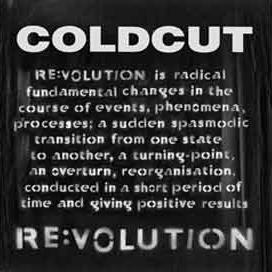 Coldcut also have reintroduced the aggression on their three-track CD"Re:Volution," coincidentally also featuring an instrumental mix of thetitle cut. The duo have picked up the pace, dropped some heavy riffageand let the samples run wild. My preference here lies more towards theinstrumental version as the samples are a bit goofy. "Space Journey" onthe other hand is punchy jazzy number, originally on the 'Let Us Play'LP, the version here is the internet competition winner. Once again Irecommend waiting for a full-length, as the three tracks (of two songs)don't even total 12 minutes together.
Coldcut also have reintroduced the aggression on their three-track CD"Re:Volution," coincidentally also featuring an instrumental mix of thetitle cut. The duo have picked up the pace, dropped some heavy riffageand let the samples run wild. My preference here lies more towards theinstrumental version as the samples are a bit goofy. "Space Journey" onthe other hand is punchy jazzy number, originally on the 'Let Us Play'LP, the version here is the internet competition winner. Once again Irecommend waiting for a full-length, as the three tracks (of two songs)don't even total 12 minutes together.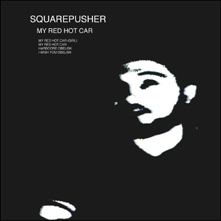 Finally, Squarepusher's return to aggression takes the form of thecleverly mis-titled "My Red Hot Car" (upon listening, it's obvioussomething completely different's being said). The two versions don'tdiffer that greatly, the first being the exact version from theforthcoming full-lengther, "Go Plastic" due in July. I'm somewhatpleased Mr. Jenkinson has reverted to his more electronically processedfast breaks circa Big Loada & Hard Normal Daddy — the organics ofthe last couple releases did grow a little tired after many listens,perhsps the album will be a nice balance of everything. At the time Igot this EP I was working on modifications of the Nurse With Woundwebsite, listening to some old gems. Track 3, "Hardcore Obelisk"strangely enough bears a striking resemblance to "Swansong" from the CDedition of 'A Missing Sense' in its sparse dronescapes. Squarepusher'sexperiment however is under five minutes and is absent of a certain'flow' which would work nicely. The fourth track, "I Wish You Obelisk"goes breakbeat silly but ends with one of those irritating silences(this one runs over 20 minutes) followed by a rather enjoyablebass-drone heavy beat-less piece which at the right volume shakes thespeakers and floors. Once again, while I do enjoy the music, I'm goingto have to recommend waiting for the full length.
Finally, Squarepusher's return to aggression takes the form of thecleverly mis-titled "My Red Hot Car" (upon listening, it's obvioussomething completely different's being said). The two versions don'tdiffer that greatly, the first being the exact version from theforthcoming full-lengther, "Go Plastic" due in July. I'm somewhatpleased Mr. Jenkinson has reverted to his more electronically processedfast breaks circa Big Loada & Hard Normal Daddy — the organics ofthe last couple releases did grow a little tired after many listens,perhsps the album will be a nice balance of everything. At the time Igot this EP I was working on modifications of the Nurse With Woundwebsite, listening to some old gems. Track 3, "Hardcore Obelisk"strangely enough bears a striking resemblance to "Swansong" from the CDedition of 'A Missing Sense' in its sparse dronescapes. Squarepusher'sexperiment however is under five minutes and is absent of a certain'flow' which would work nicely. The fourth track, "I Wish You Obelisk"goes breakbeat silly but ends with one of those irritating silences(this one runs over 20 minutes) followed by a rather enjoyablebass-drone heavy beat-less piece which at the right volume shakes thespeakers and floors. Once again, while I do enjoy the music, I'm goingto have to recommend waiting for the full length.
samples:
- Techno Animal - Dead Man's Curse
- Techno Animal - City of Glass
- Coldcut - Re: Volution [instrumental]
- Coldcut - Space Journey
- Squarepusher - My Red Hot Car
- Squarepusher - [the hidden track]
Read More
- Administrator
- Albums and Singles
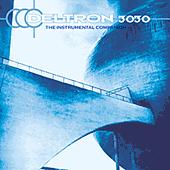 There's a certain amount of irony in releasing an instrumental versionof an existing hip hop album. I have always liked the sounds that camefrom both the Automator and Kid Koala but when I saw Deltron live lastyear, the rap somewhat turned me off of the collective. Thus, I wasexcited at first to hear 75 Ark were releasing an instrumental versionof the debut full-lengther. I was blown away immediately at the startof the album's opener, '3030', the production is seamless and combinesa healthy blend of orchestral samples to some pretty fine hip hopbreaks. The sad yet grand themes could easily provide the underlyingscore for a film crew's survey of the post-apocalyptic remains of afallen society. As the album progresses, the production never weakens,mixing a whole host of other styles and influences. When the patternsand sequences repeat too many times within a song, there is a sensethat there is indeed something missing. I thought I was taking the easyway out by only sticking to the instrumental version, but I find myselfthirsty to uncover the original myself.
There's a certain amount of irony in releasing an instrumental versionof an existing hip hop album. I have always liked the sounds that camefrom both the Automator and Kid Koala but when I saw Deltron live lastyear, the rap somewhat turned me off of the collective. Thus, I wasexcited at first to hear 75 Ark were releasing an instrumental versionof the debut full-lengther. I was blown away immediately at the startof the album's opener, '3030', the production is seamless and combinesa healthy blend of orchestral samples to some pretty fine hip hopbreaks. The sad yet grand themes could easily provide the underlyingscore for a film crew's survey of the post-apocalyptic remains of afallen society. As the album progresses, the production never weakens,mixing a whole host of other styles and influences. When the patternsand sequences repeat too many times within a song, there is a sensethat there is indeed something missing. I thought I was taking the easyway out by only sticking to the instrumental version, but I find myselfthirsty to uncover the original myself.
samples:
Read More
- Administrator
- Albums and Singles
Being a V/Vm fan requires a willingness to be continually entertained by the same joke and a willingness to part ways with a lot of money. Here we have two more in an ongoing series of cute, color coded 3" CDs. Both take source material and effect it in some way either to mangle it or simply borrow it. The Alien Porno Midgets disc does it with 8 tracks (different from the preceding Alien 7") of traditional Hawaiian music. Ukeleles, pedal steel and island rhythms are still recognizable but certainly altered as several tracks are reduced to a sonic sludge.
The Dr. Fred disc does it with 7 TV medical drama theme songs: Casualty, Dr Killdare, Quincy, A Country Practice, St. Elsewhere, Young Doctors and E.R., plus 3 short untitled tracks. I've never been a fan of any of these shows so I'm only vaguely familiar with a few of the themes. St. Elsewhere and E.R. sound the most interesting as they're the most obliterated. The last track is a creepy, pitch shifted and slowed down rendition of The Living End's "Prisoner (On the Inside)" that's on par with "The Lady in Red" from the "Sick Love" cd. Wacky. But these will surely pale in comparison to the pair of 'HelpAphexTwin' 3" CDs and 'Sick Love Will Tear Us Apart' 7" due out soon.
samples:
- Dr. Fred Plays St. Elsewhere
- Dr. Fred Plays track 10
- Alien Porno Midgets - Blue Hawaiian UFO Farewell
- Alien Porno Midgets - Waikiki Beach
Read More